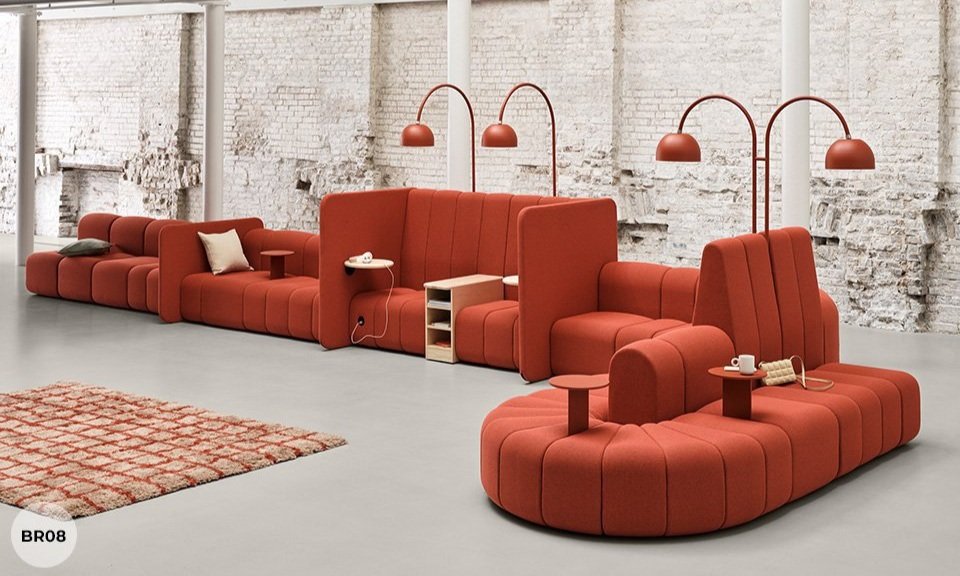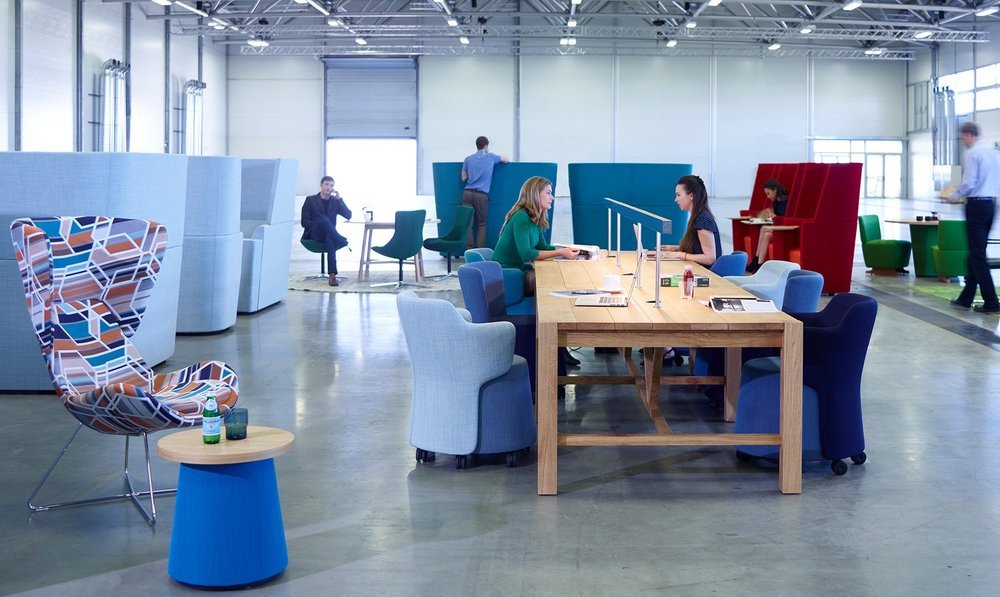10 ways to help balance privacy and openness in collaborative healthcare environments
In healthcare organisations, striking the delicate balance between privacy and openness is crucial for creating a collaborative and productive workspace. As the landscape of modern healthcare continues to evolve, finding innovative furniture solutions becomes paramount. In this blog post, we will explore some ideas that can help healthcare organisations achieve this perfect balance.
Collaboration plays a vital role in healthcare environments, where teams work together to provide the best care for their patients. Designing collaborative spaces that foster teamwork is key to promoting effective communication and collaboration among healthcare professionals.
1. The open collaboration hub
If you want to encourage collaboration without sacrificing individual focus, try creating an open collaboration hub. These areas can feature communal tables, lounge seating, and writable work surfaces for impromptu brainstorming sessions. By strategically placing these hubs throughout the workplace, you create dedicated zones for teamwork while maintaining an open and inclusive atmosphere.
2. Flexible workstations with dividers
Designing workstations with flexible dividers allows people to adapt their workspace based on their current tasks. Adjustable screens or movable partitions provide the option to create a private space when needed or open up for a collaborative environment. This flexibility allows individuals to adapt their surroundings to suit the task or team that requires the space.
3. Huddle rooms
Huddle rooms provide designated spaces for teams to gather for quick discussions, problem-solving, or decision-making sessions. Equipped with technology solutions such as video conferencing capabilities, whiteboards, and furniture that can inspire creative thinking, these rooms enhance collaboration and offer a healthy balance between focused work and privacy. If designed with relaxing furniture, they could also double up as wellness rooms.
4. Wellness rooms
Recognising the need for self-care and the importance of mental well-being, healthcare organisations can implement wellness rooms. These spaces can be designed with relaxing furniture and calming elements to provide a retreat where professionals or patients can take a break, meditate, or recharge.
5. Focus pods and quiet corners
Try integrating designated focus pods or quiet corners into your layout. These secluded spaces, equipped with comfortable seating and soundproofing elements, offer staff a retreat for uninterrupted work. Whether it's for a crucial deadline or a moment of concentrated thought, these spaces provide the privacy required for optimal individual productivity.
6. Hot desking with personal touches
Implementing a hot desking approach can foster openness and flexibility. However, to maintain a sense of personal space, encourage staff to add personal touches to their workstations. This could include small plants, personalised organisers, or even adjustable desk dividers to create a semi-private and comfortable atmosphere.
7. Glass booths, pods and partitions
By using glass booths, pods and partitions in your design you can create a contemporary feel and maintain a sense of openness. These elements allow natural light to flow through the space while creating important barriers for privacy. These pods offer healthcare professionals the privacy they require for concentration and ensuring patient confidentiality.
8. Lounge areas with acoustic furniture
Incorporate lounge areas into your layout, complete with acoustic furniture. These spaces can serve as casual meeting spots or places for individuals to work in a relaxed setting. Acoustic furniture helps manage noise levels, ensuring that even in an open lounge setting, staff can enjoy a degree of privacy.
9. Modular furniture for flexible configurations
A good investment for open workspaces is modular furniture that adapts to the changing needs of the workplace. This allows for quick reconfigurations based on team projects, meetings, or individual work requirements. The versatility of modular furniture makes it easier to create areas that are both private and open.
10. Plants as natural dividers
If you are looking for a more natural look, you can incorporate greenery strategically to serve as natural dividers. Plants can not only contribute to a healthier indoor environment but also create a subtle barrier between different areas. This biophilic design approach adds a touch of nature while contributing to the overall balance of privacy and openness.
Achieving harmony in modern workspaces
As the traditional healthcare environment continues to transform, finding the perfect balance between privacy and openness is an ongoing challenge. By thoughtfully implementing open furniture layouts and design strategies, you can create a modern workspace that seamlessly adapts to the diverse needs of your team. Remember, the key is to try and create an environment that empowers staff to work collaboratively and individually, which can fuel innovation, productivity and ultimately help to improve patient care.
If you would like to discuss our range of healthcare furniture options and solutions, please contact us and speak to one of our healthcare interior experts.

















